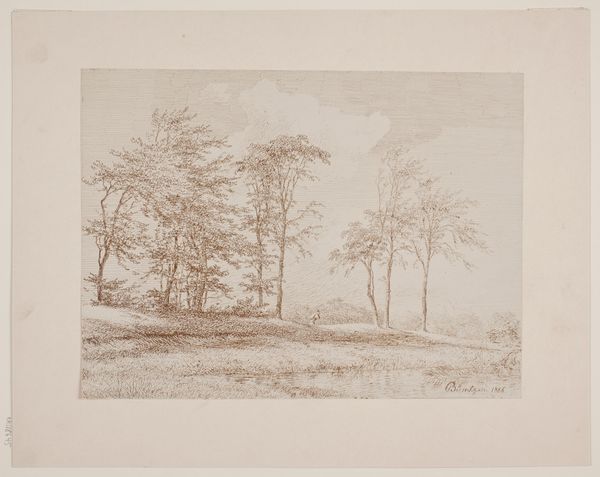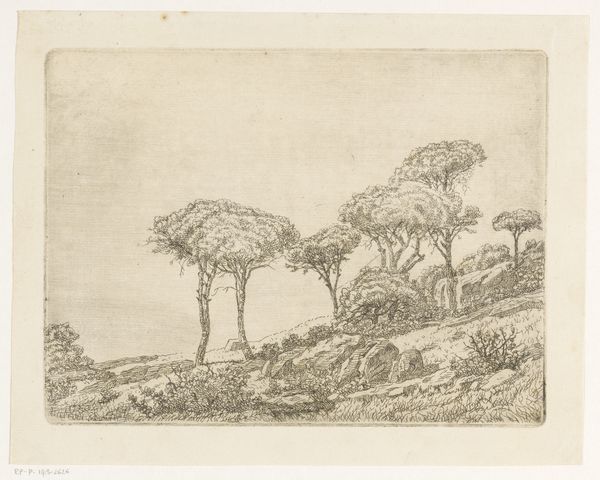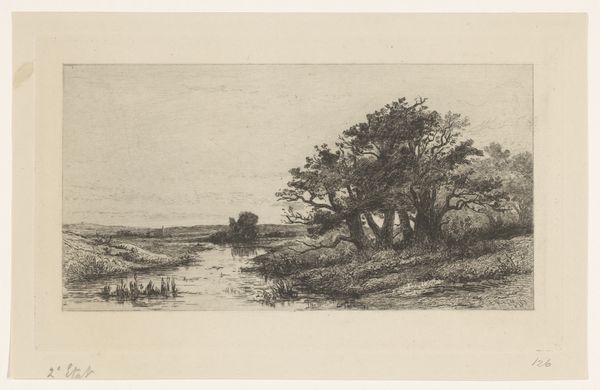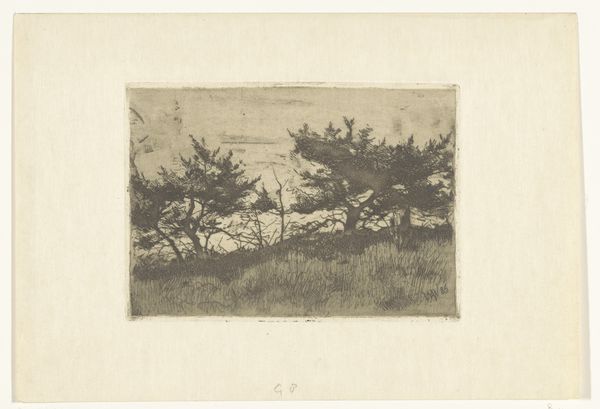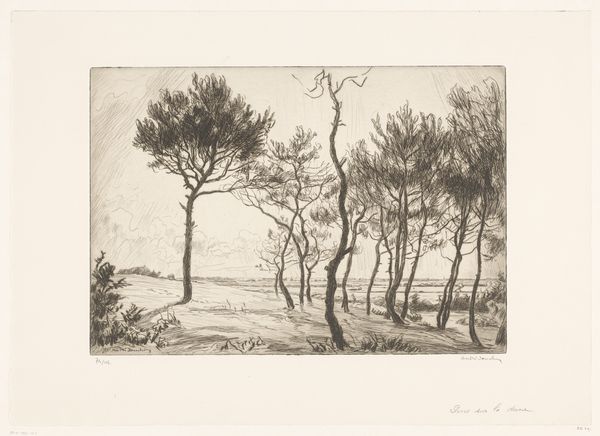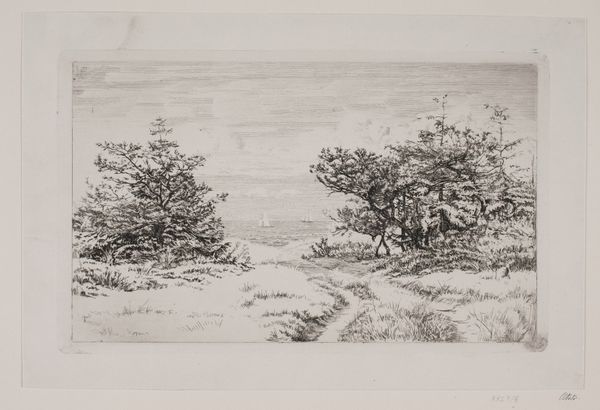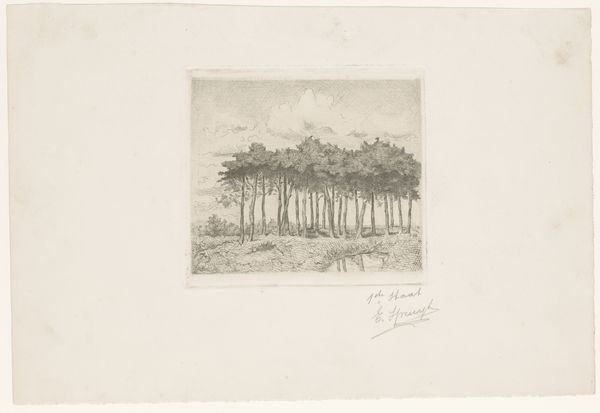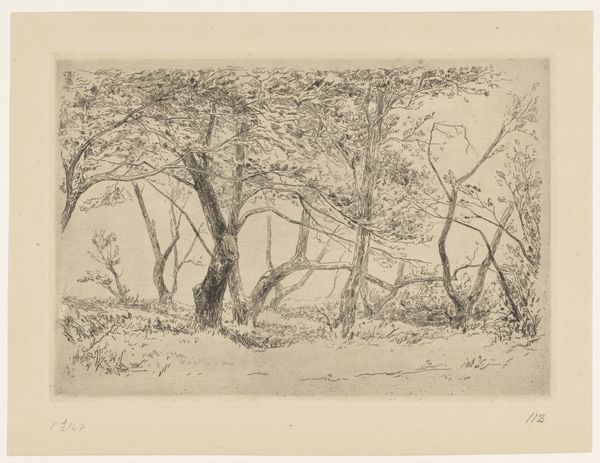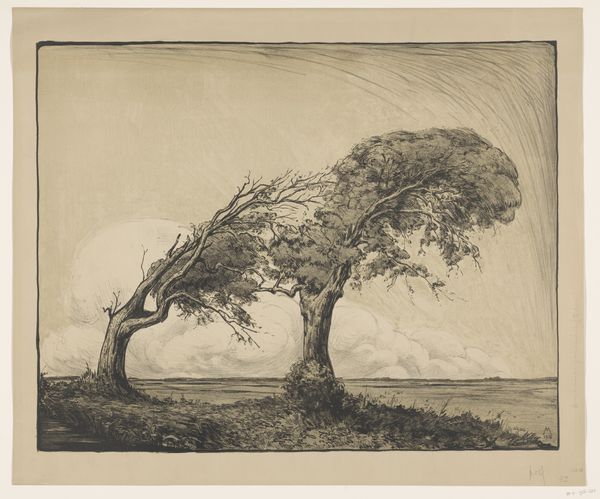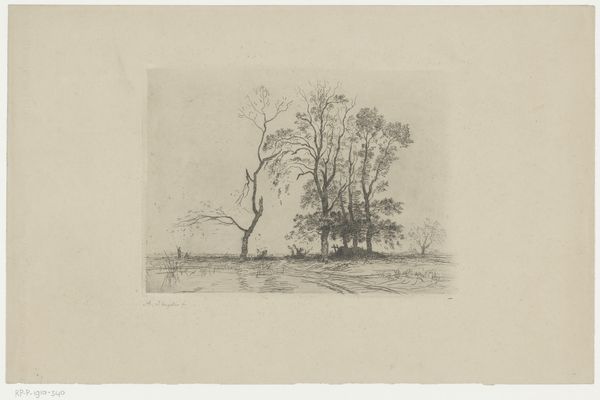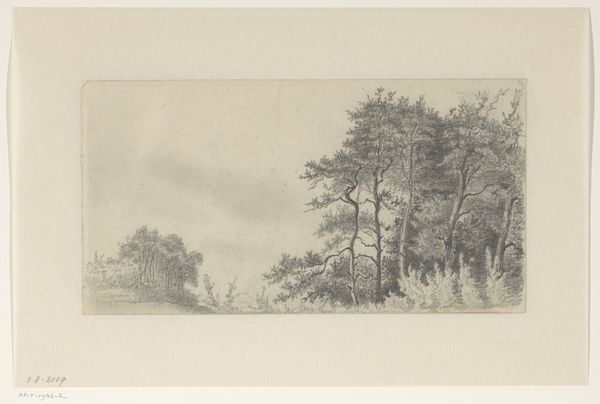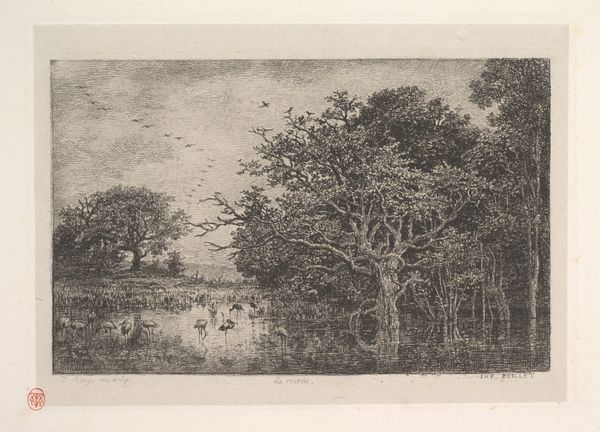
print, etching
# print
#
etching
#
landscape
#
etching
#
line
#
realism
Dimensions: height 176 mm, width 333 mm, height 259 mm, width 402 mm
Copyright: Rijks Museum: Open Domain
Editor: This is Mia Bake's 1929 etching, "Heidelandschap," a windswept landscape rendered with such fine detail. It really captures a sense of resilience, wouldn’t you say? What strikes you when you look at this piece? Curator: That sense of resilience speaks volumes about its historical context. In 1929, the world teetered on the brink of the Great Depression, a time of immense social and economic upheaval. The stark beauty and unwavering strength of these trees, permanently captured using the printmaking technique, perhaps reflected a collective desire for perseverance during turbulent times. Notice how the artist made use of lines; How might Bake's focus on this subject connect to the societal role of art at the time? Editor: So, was landscape art often used to… bolster spirits, to remind people of the land's enduring power? Curator: Precisely. Landscape art often served as a form of visual propaganda, subtly reinforcing notions of national identity and stability, especially when the world was experiencing such destabilization. Mia Bake gives us almost photo-realistic detail, despite working with the graphic medium of etching; how does this realism affect the politics of imagery at this time? Editor: Hmm, I hadn't considered that. The realism could lend more weight to the idea of stability, making it feel more tangible, less like propaganda. Curator: Exactly! It’s an interesting contradiction, isn't it? Editor: This artwork does open up a different way of thinking about the social impact of landscapes. Thanks! Curator: My pleasure. And you've helped me to see a new connection between artistry and cultural climate.
Comments
No comments
Be the first to comment and join the conversation on the ultimate creative platform.

